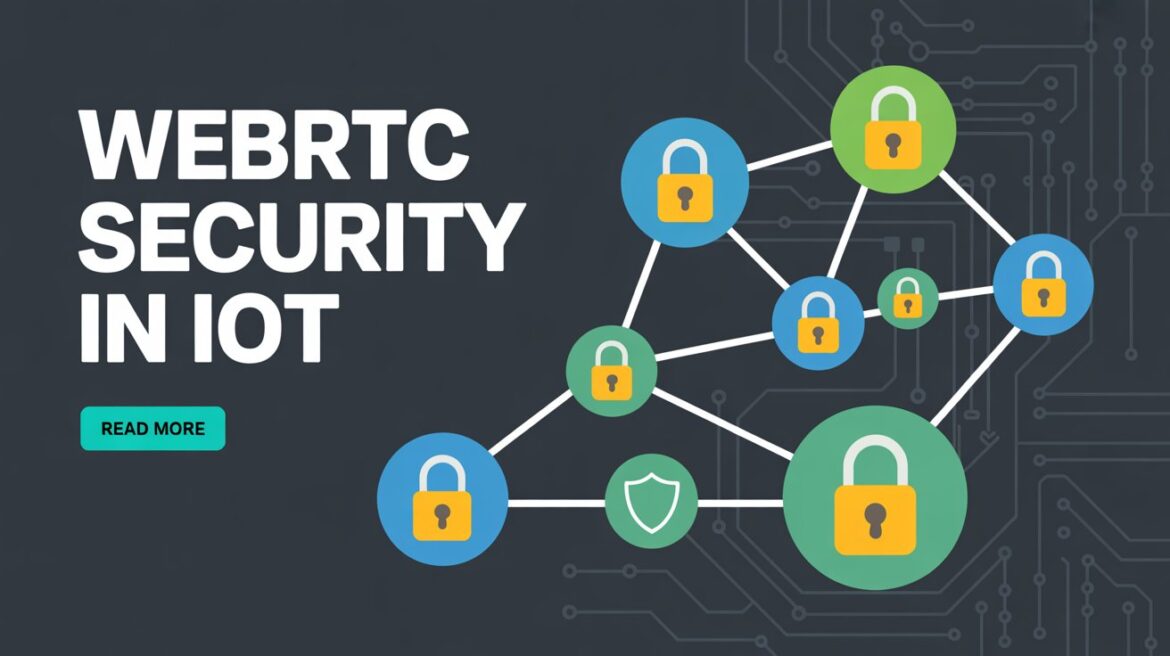The Internet of Things (IoT) continues to grow rapidly, driving the need for secure, real-time communication between devices. Web Real-Time Communication (WebRTC) is emerging as a pivotal technology in this space. Originally developed to enable peer-to-peer audio, video, and data exchange via web browsers, WebRTC is now playing a crucial role in IoT communications, particularly in low-latency, high-security environments.
But how does WebRTC address the unique security needs of IoT systems? In this blog, we’ll unpack the architecture of WebRTC’s security and explore how it fortifies communication in connected devices.
What is WebRTC?
WebRTC (Web Real-Time Communication) is an open-source project that allows browsers and mobile apps to communicate via voice, video, and data without needing plugins. It’s widely used in video conferencing platforms, but its low-latency, peer-to-peer capabilities make it highly suitable for IoT use cases—especially in scenarios like remote control, live surveillance, and smart home automation.
Key Components of WebRTC Security Architecture
WebRTC has security embedded in its core. The architecture includes several mechanisms that ensure end-to-end protection of communication, which is essential for sensitive IoT applications.
1. Encryption (DTLS and SRTP)
All media and data streams in WebRTC are encrypted by default:
- DTLS (Datagram Transport Layer Security) encrypts signaling and data channels.
- SRTP (Secure Real-time Transport Protocol) secures the audio and video streams.
This dual encryption model ensures that even if data is intercepted, it cannot be read or tampered with.
2. Peer Authentication and Identity Verification
WebRTC supports identity assertions to verify the authenticity of a peer before establishing a connection. It uses technologies like OAuth 2.0 and Identity Providers (IdPs) to authenticate users and devices, minimizing the risk of unauthorized access.
3. NAT Traversal and ICE Framework
IoT devices are often deployed behind NATs (Network Address Translators) or firewalls. WebRTC uses Interactive Connectivity Establishment (ICE), STUN, and TURN protocols to navigate these obstacles securely, ensuring the connection is reliable and resilient against network-level attacks.
4. Consent Freshness and Firewall Pinning
To prevent unauthorized data streaming, WebRTC includes mechanisms like:
- Consent freshness checks: Regularly confirms the peer is still reachable and approved.
- Firewall pinning: Keeps the network path open only when required, limiting exposure.
These features prevent hijacking or misuse of open data channels.
Why WebRTC is a Strong Fit for IoT
WebRTC’s architecture naturally aligns with IoT needs for real-time, secure, and efficient communication.
Benefits for IoT:
- Low latency communication for real-time control and monitoring.
- Built-in encryption reduces the need for additional security layers.
- Peer-to-peer architecture minimizes reliance on centralized servers, improving scalability and reducing bottlenecks.
- Interoperability with various platforms, browsers, and devices.
IoT applications like smart cameras, industrial sensors, and connected vehicles can leverage WebRTC for secure live feeds, telemetry sharing, and device-to-device interactions.
Challenges and Considerations
While WebRTC is secure by design, integrating it with IoT comes with challenges:
- Resource constraints on IoT devices may limit support for full WebRTC stacks.
- Scalability can become complex in large mesh networks.
- Signaling is not standardized in WebRTC, requiring developers to build or adopt separate signaling mechanisms.
To address these issues, developers must optimize WebRTC implementations for embedded systems and choose reliable signaling solutions.
Final Thoughts
WebRTC offers a robust, secure foundation for real-time IoT communication. With encryption, identity verification, and firewall traversal built in, it addresses many of the security concerns inherent in IoT environments. As more industries move toward connected ecosystems, understanding and leveraging WebRTC’s security architecture will be crucial for building resilient, scalable, and secure IoT solutions.
